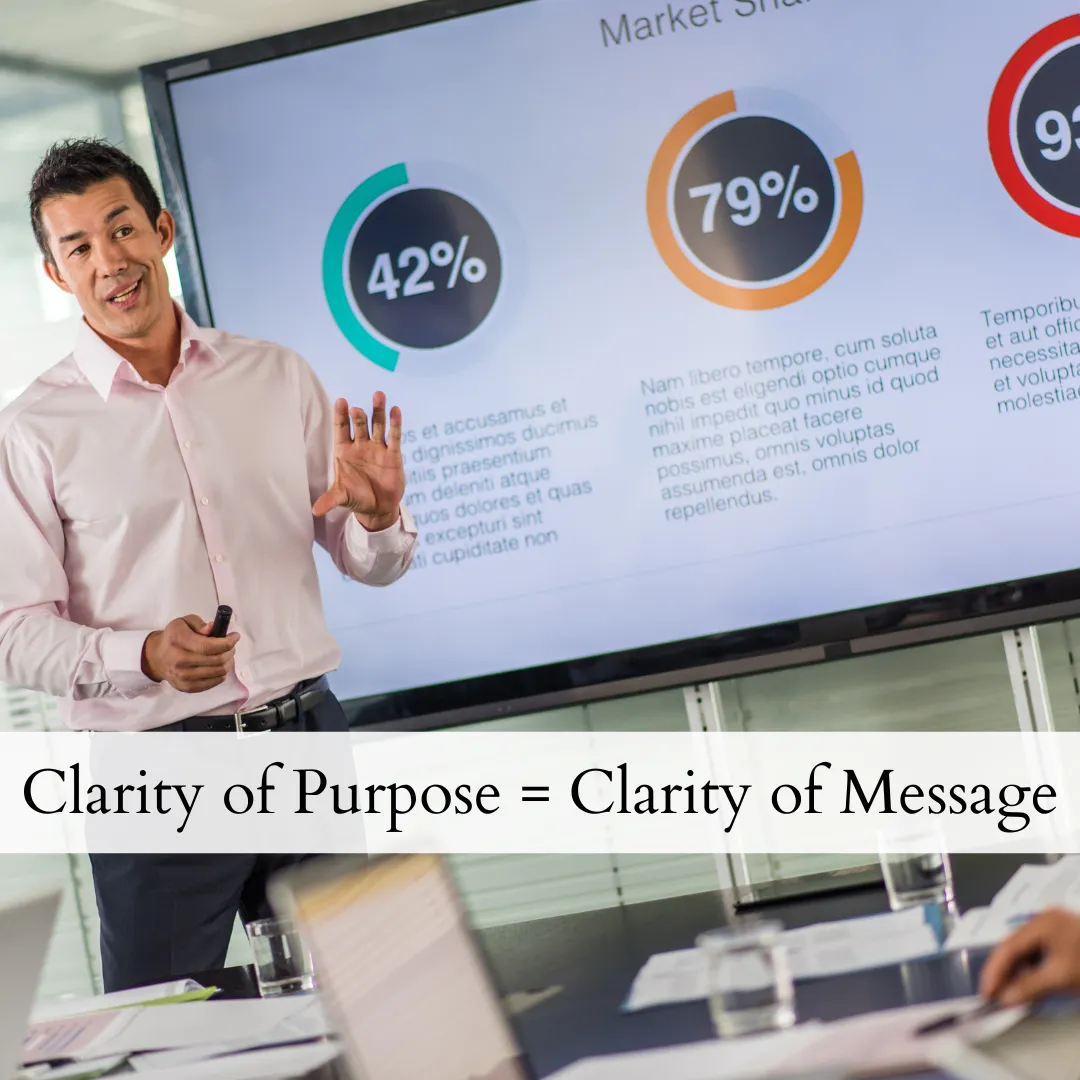
The Importance of Determining the Goal of Your Presentation: Are You Informing, Persuading—or Both?
The Importance of Determining the Goal of Your Presentation: Are You Informing, Persuading—or Both?
When preparing to make any kind of presentation, the first and most important question to ask yourself is:
Who is my audience?
The second most important question to ask is:
What do I need/want to accomplish with this presentation?
Do I need to simply inform my audience about something
OR
Do I need my audience to take action at the end of the presentation?
If your goal is the second one, that means you need to not only inform your audience, you also need to persuade them.
Being clear about your primary goal enables you to properly structure and deliver your message and decide what elements you need to include.
Informing vs. Persuading: What’s the Difference?
In an informative presentation, your goal is for your audience to know something at the end of your presentation they didn’t know before they listened to you. This usually involves sharing facts: statistics, data and other information that may be new to your audience.
Typically this kind of information is delivered objectively and impersonally and appeals to your audience’s rational, thinking brain. To ensure the information is memorable, use your voice and body to deliver the message engagingly.
If your goal is to persuade your audience, you are likely informing them about something, but you also need them to DO something, to take action at the end of your presentation. This could be deciding to fund a project, allowing you to hire additional team members, or giving you the green light to go ahead with a plan you are proposing.
The key thing to understand is that people (you and me) take action on the basis of feeling something. If you want people to act, you must include elements in your presentation that engage your audience emotionally. This means sharing what you believe, what you care about, and why it matters. You have to tap into your audience’s Limbic (mammalian) brain. The best way to do this is with story.
Often You’re Probably Doing Both
It’s rare to give a presentation that is only informative. Most of the time, you’ll need your audience to take action, so you’ll be doing both informing and persuading.
For example:
You might be sharing data (informing) to build support for a new initiative (persuading).
You might be explaining a new policy (informing), while also encouraging compliance or buy-in (persuading).
You can think of informing and persuading as on a continuum. Knowing where your presentation sits on that continuum will help you prioritize both your content and how you deliver it.
If you’re asking your audience to act, for example, approve, or allocate resources, you’ll want to shift toward the persuasive end of the scale—and devote more time to framing your message emotionally, not just intellectually.
Important point: if you need your audience to act, avoid overwhelming them with too much information initially. Focus on persuading them first; once they’re on board with your idea or plan, share additional details, when they’re ready to learn more.
Where Does Your Presentation Fall?
Here are some examples to help you identify where the presentation you’re planning falls on the continuum:
Purely Informing
Example: reporting out data from a scientific study or explaining how a new process will be implemented. The primary goal is clarity and accuracy.
Purely Persuading
Purely persuading can take us into the realm of manipulation, a place we never want to go. The classic example is the much maligned used car salesman pitch. His (or her) focus isn’t on facts—in fact, they may falsely represent the facts and appeal to your sense of vanity to persuade you to buy.
A Blend of Both
A good example of a blend of both is the classic business pitch. In a good business pitch you tell a story about a problem you are solving, you inform them about the solution you offer and you continue the story to explain the difference your solution will make. Combining story (problem), information (solution) and more story (transformation) is a successful formula for appealing to your audience’s emotions and motivating them to act.
Key Takeaway
When preparing your next presentation, ask yourself:
Do I want people to know something—or do I want them to know and do something?
Your answer will help you determine where you fall on the Informing vs. Persuading Continuum and guide you in preparing the right content to meet your goal.
